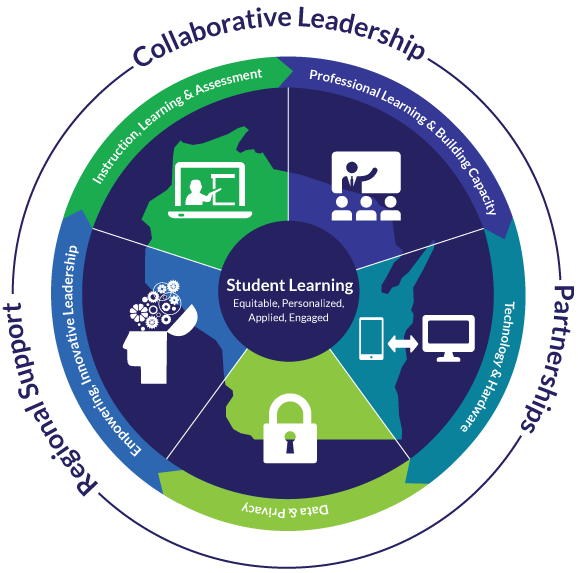The Adoption of Wisconsin Standards by Local School Districts
As stated by the Wisconsin Department of Public Instruction: "Wisconsin Academic Standards specify what students need to know and be able to do in the classroom. They serve as goals to support teaching and learning. Setting high standards enables students, parents, educators, and citizens to know what students need to have learned at a given point in time. In Wisconsin, all state standards serve as a model. Locally elected school boards adopt academic standards in each subject areas and programming to best serve their local community."
What if we are currently using the 1998 Wisconsin ITL Standards or the ISTE Student Standards (version 2007 or 2016)
The Wisconsin Standards for Information and Technology Literacy (ITL) were built from the content framework of the International Society for Technology Education (ISTE) Student Standards (2016). While minor language modifications were made in the WI ITL sections with expanded learning priorities for the high school grade band, both standards leverage the same content area and standards. Districts that have been using the ISTE student standards are encouraged to replace or adopt these new standards and supporting resources to align to the student learning goals of the Wisconsin Digital Learning Plan.
Why Should a District Adopt the WI Standards for Information and Technology Literacy (ITL)?
Academic Standards ensure that all children have equal access to high-quality education programs. Clear statements about what students must know and be able to do are essential in making sure our schools offer opportunities to get the knowledge and skills necessary for success beyond the classroom. As with all the standards, the Wisconsin Standards for Information and Technology Literacy may be taught and integrated into a variety of classes and experiences. Every Wisconsin student should have the equitable opportunity to be empowered learners in digitally enabled classrooms to learn about:
- Digital media and information literacy
- Digital Citizenship, data privacy, and cyber safety
- Instructional technology and information skills that enable students to be College and Career Ready
- Creation, collaboration, communication, and critical thinking skills across all content areas
- Uses of data to drive learning and decision-making
- Inquiry and design thinking learning opportunities
- Computational thinking skills inclusive of problem-solving and coding
Each district, school and program area should determine the means by which students meet these standards across the grade bands. Through the collaboration of multiple stakeholders, these foundational standards will set the stage for high-quality, successful, contemporary information and technology programming throughout Wisconsin’s K-12 systems.
 The State Superintendent's Wisconsin Digital Learning Plan (2016) identified updating the current Information and Technology Literacy Standards as a priority for DPI in collaboration with our local school districts and professional partners. The Plan's vision for student learning called for equitable, personalized, applied, and engaged digital learning for all students. The skillful and equitable use of technology can transform the way teaching and learning happen in classrooms across Wisconsin. Digital tools can enhance student learning as they connect efforts to identify what students should know and be able to do as well as help students and educators assess progress toward achieving academic goals. To meet the needs of today's students and to ensure they are college and career ready, schools are encouraged to be innovative in providing student learning experiences, adopting technologies and instruction in ways, which meaningfully engage the digital generation. District have to leverage collaborative leadership teams and community partners to ensure proper planning and budgeting to support high-quality technology-rich learning opportunities.
The State Superintendent's Wisconsin Digital Learning Plan (2016) identified updating the current Information and Technology Literacy Standards as a priority for DPI in collaboration with our local school districts and professional partners. The Plan's vision for student learning called for equitable, personalized, applied, and engaged digital learning for all students. The skillful and equitable use of technology can transform the way teaching and learning happen in classrooms across Wisconsin. Digital tools can enhance student learning as they connect efforts to identify what students should know and be able to do as well as help students and educators assess progress toward achieving academic goals. To meet the needs of today's students and to ensure they are college and career ready, schools are encouraged to be innovative in providing student learning experiences, adopting technologies and instruction in ways, which meaningfully engage the digital generation. District have to leverage collaborative leadership teams and community partners to ensure proper planning and budgeting to support high-quality technology-rich learning opportunities.